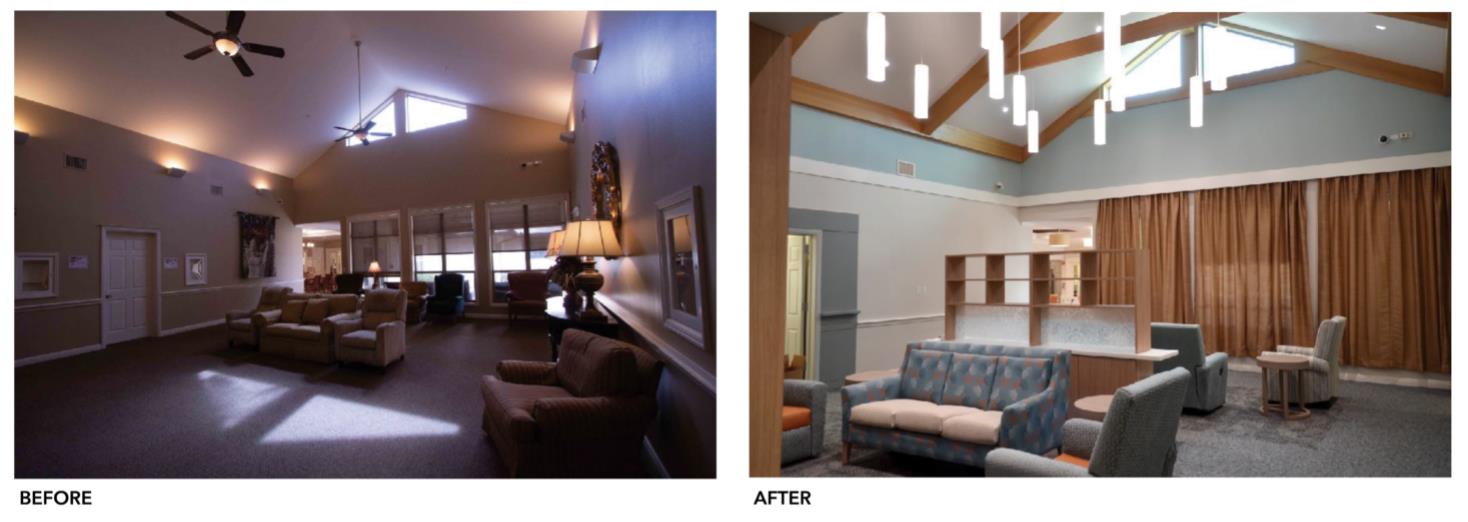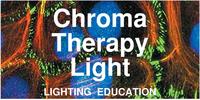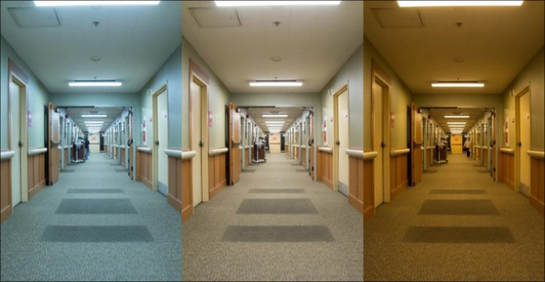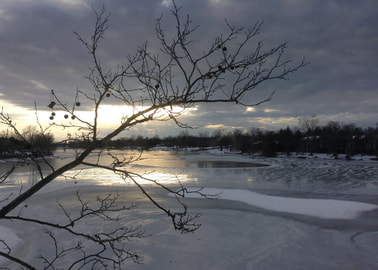Alzheimers and Light Therapy - Learning Objectives
Long Term Care Facility Lighting and Patients with Alzheimer DiseaseLighting in long-term care facilities is usually not bright enough during the day and perhaps too bright during the evening. Typical indoor lighting provides less than 100 lux at the eye, whereas being outside on a sunny day will provide anywhere from 1,000 to more than 10,000 lux at the eye. Older adults in long-term care facilities often spend their days and nights in dimly-lit rooms with minimal time spent outdoors, and thus, are not experiencing the robust daily patterns of light and dark that synchronize the body’s circadian clock to local sunrise and sunset. [1]
Effects of a Tailored Lighting Intervention on Sleep Quality, Rest–Activity, Mood, and Behavior in Older Adults With Alzheimer Disease and Related Dementias: A Randomized Clinical TrialResults:
The active intervention significantly improved Pittsburgh Sleep Quality Index scores compared to the active baseline and control intervention (mean ± SEM: 6.67 ± 0.48 after active intervention, 10.30 ± 0.40 at active baseline, 8.41 ± 0.47 after control intervention). The active intervention also resulted in significantly greater active versus control differences in intradaily variability. As for secondary outcomes, the active intervention resulted in significant improvements in Cornell Scale for Depression in Dementia scores (mean ± SEM: 10.30 ± 1.02 at baseline, 7.05 ± 0.67 after active intervention) and significantly greater active versus control differences in Cohen-Mansfield Agitation Inventory scores (mean ± SEM: −5.51 ± 1.03 for the active intervention, −1.50 ± 1.24 for the control intervention). Conclusions: A lighting intervention tailored to maximally entrain the circadian system can improve sleep, mood, and behavior in patients with dementia living in controlled environments. [1] For a full 30 page report on Eskaton Circadian Light project, click the link below.
https://www.smud.org/-/media/Documents/Business-Solutions-and-Rebates/Advanced-Tech-Solutions/LED-Reports/Eskaton-Circadian-Lighting-Project.ashx Melatonin for sleep
Ways of adding light to your homeHere are a few tips to creating a brighter home or office.
Tuning the Light in Senior Care: Evaluating a Trial LED Lighting System at the ACC Care Center in Sacramento, CA"Residents whose rooms are located in other corridors at the Care Center are now spending time “hanging out” in Cherry Lane, either wheeling themselves to that area or asking a staff member to take them to Cherry Lane."
At the recent IES Light + Health symposium in Atlanta, Connie Samla presented phase two of her Senior Care lighting retrofit study. This is an example of a very successful application for circadian friendly lighting systems and controls in elder care and memory units. Connie Samla's project, in Sacramento, was first published in 2016, funded by the Department of Energy and Sacramento Municipal Utility District She is now on phase two of her study.
Health-Related Outcomes:
..."For the 3 months following the LED trial installation, target behaviors such as yelling, agitation, and crying were reduced by an average of 41% for the three residents, relative to the 3 months immediately preceding the installation. Nursing staff noted that all three residents had been consistently sleeping through the night since the installation, and noted that one resident now slept through the night in his bed, although he had previously refused to sleep in his bed and instead slept in his wheelchair. ACC staff also noted that psychotropic and sleep medication use had been significantly reduced for one of the residents whose room was included in the trial installation." [1] |
Blue Skies of Texas Application of BIOS Circadian Lighting
During the day, the lighting for Blue Skies of Texas includes a specific blue sky light signal (490nm) to provide a strong daytime light cue to the residents and staff alike, helping to signal to their brains that it is daytime. In the evening, this blue sky signal is turned off and the intensity of the lights is reduced which creates a biological nighttime signal. Providing clear daytime and nighttime light signals creates a cycle that helps signal to our body that it is time for sleep, encourages the production of melatonin which helps prepare our bodies and minds for sleep.
Blue Skies’ Freedom House is a sophisticated client whose mission is focused on the early adoption of research-based technologies. They are committed to innovative standards for memory care which includes residents experiencing Alzheimer’s, dementia, and other cognitive impairments. Blue Skies embraced the research and evidence-based design approach for this renovation, which included the use of BIOS Circadian Lighting Solutions.
The project is centered on the belief that the physical environment has a significant impact on the cognitive, emotional, and physical well-being of its inhabitants. Circadian lighting was a key strategy implemented to help support the goals of the project and provide wellness to staff and residents within the facility. [3] Light Treatment for SAD -
|
Related Topics
|
Footnotes
- Effects of a Tailored Lighting Intervention on Sleep Quality, Rest–Activity, Mood, and Behavior in Older Adults With Alzheimer Disease and Related Dementias: A Randomized Clinical Trial http://jcsm.aasm.org/ViewAbstract.aspx?pid=31734
- Senior Care Lighting Retrofit https://www.energy.gov/sites/prod/files/2016/09/f33/2016_gateway-acc.pdf
- Blue Skies of Texas: https://www.lightfairblog.com/blue-skies-texas-freedom-house-a-case-study-from-bios-lighting/ & https://bioslighting.com/human/
- Klein RS, Werth VP, Dowdy JC, Sayre RM. 2009 Analysis of compact fluorescent lights for use by patients with photosensitive conditions. Photochem Photobiol 85(4):1004-1010. https://www.ncbi.nlm.nih.gov/pmc/articles/PMC2868278/www.ncbi.nlm.nih.gov/pmc/articles/PMC2868278/
- IES RP-28-16 Lighting and the Visual Environment for Seniors and the Low Vision Population IES.org
Photo Credits
Deborah Borrowdale-Cox
US Department of Energy
US Department of Energy







